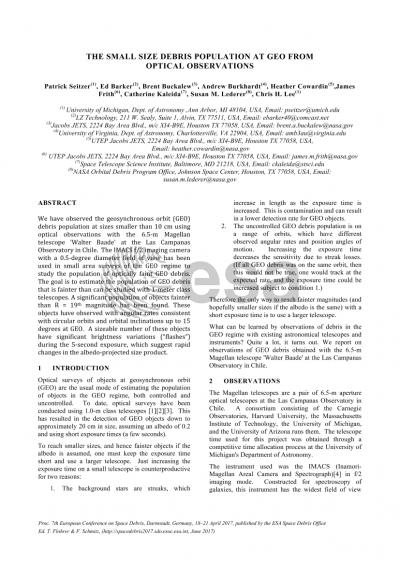Document details

Abstract
We have estimated the geosynchronous orbit (GEO) debris population at sizes smaller than 10 cm using optical observations with the 6.5-m Magellan telescope 'Walter Baade' at the Las Campanas Observatory in Chile. The IMACS f/2 imaging camera with a 0.5-degree diameter field of view has been used in small area surveys of the GEO regime to study the population of optically faint GEO debris. The goal is to estimate the population of GEO debris that is fainter than can be studied with 1-meter class telescopes. A significant population of objects fainter than R = 19th magnitude has been found. These objects have observed with angular rates consistent with circular orbits and orbital inclinations up to 15 degrees at GEO. A sizeable number of these objects have significant brightness variations (“flashes”) during the 5-second exposure, which suggest rapid changes in the albedo-projected size product. We compare the size of our optically faint population with the numbers of GEO objects in the public catalog and the numbers found at brighter magnitudes by smaller telescopes.
Preview






